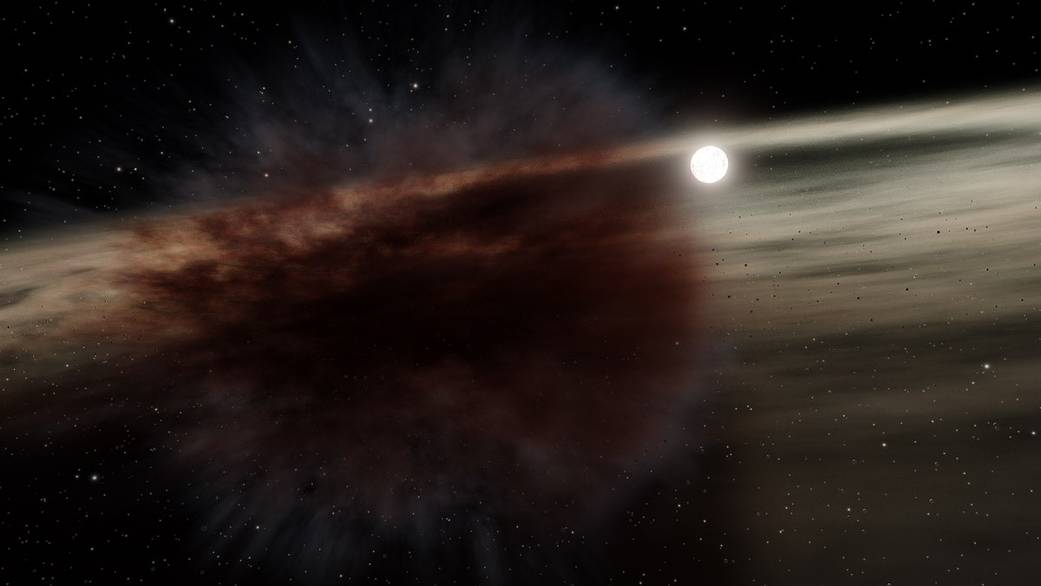Major smashups between rocky bodies shaped our solar system. Observations of a similar crash give clues about how frequent these events are around other stars.
Most of the rocky planets and satellites in our solar system, including Earth and the Moon, were formed or shaped by massive collisions early in the solar system’s history. By smashing together, rocky bodies can accumulate more material, increasing in size, or they can break apart into multiple smaller bodies.
Astronomers using NASA’s now-retired Spitzer Space Telescope have in the past found evidence of these types of collisions around young stars where rocky planets are forming. But those observations didn’t provide many details about the smashups, such as the size of the objects involved.
This illustration depicts the result of a collision between two large asteroid-sized bodies: a massive debris cloud around a young star. NASA’s Spitzer saw a debris cloud block the star HD 166191, giving scientists details about the smashup that occurred.
Image Credit: NASA/JPL-Caltech
岩石天体之间重大的相互碰撞塑造了我们的太阳系。对类似碰撞的观察提供了有关这些事件在其他恒星周围发生频率的线索。
我们太阳系中的大多数岩石行星和卫星,包括地球和月球,都是由太阳系历史早期的大规模碰撞形成或塑造的。通过相互碰撞,岩石天体可以积累更多的物质,增大体积,或者分裂成多个更小的天体。
天文学家使用NASA现已退役的斯皮策太空望远镜,在过去发现了岩石行星正在形成的年轻恒星周围发生此类碰撞的证据。但是,这些观测并没有提供有关相互碰撞的更多细节,比如所涉及天体的大小。
这张插图描绘了两个小行星大小的大型天体之间碰撞的结果:围绕一颗年轻恒星的巨大碎片云。NASA的斯皮策发现一片碎片云阻挡了恒星HD 166191,为科学家提供了发生碰撞的细节。
图片来源:NASA/JPL-Caltech



